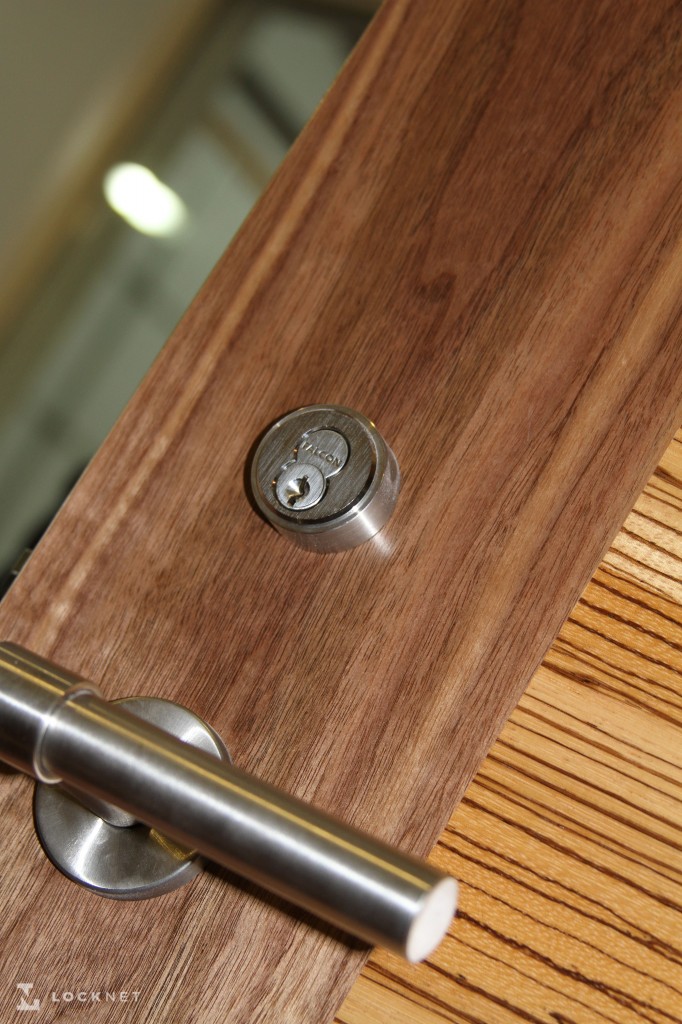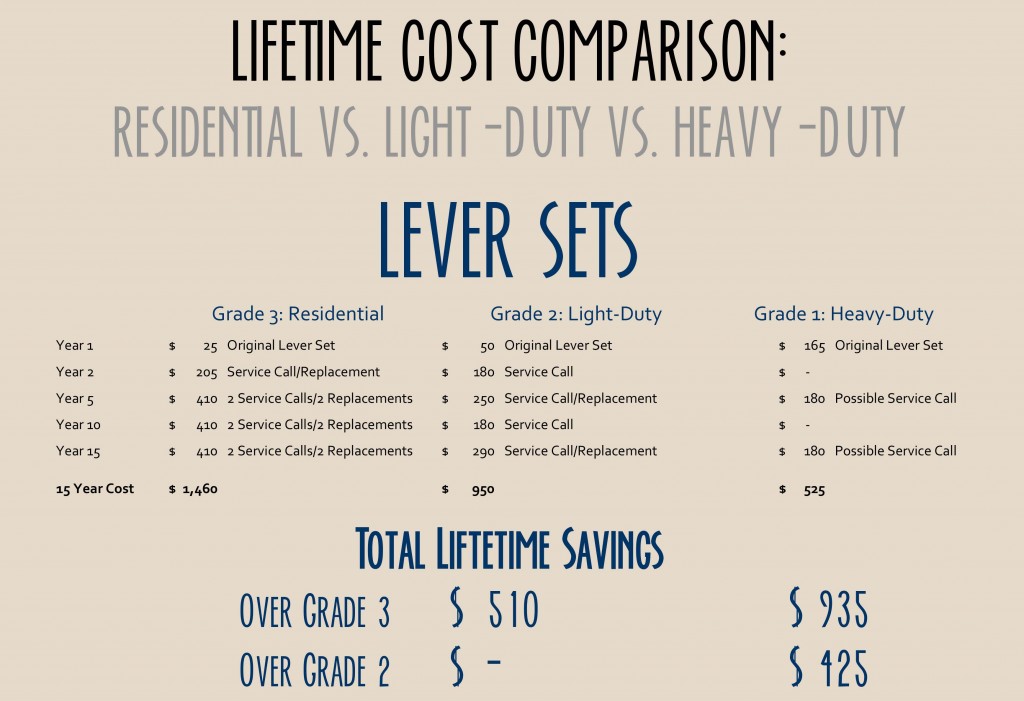 The sheer number of broken lever sets we’ve come across over the years is mind boggling. The funny thing is this can be one of the easiest issues to address when it comes to your locking hardware!
The sheer number of broken lever sets we’ve come across over the years is mind boggling. The funny thing is this can be one of the easiest issues to address when it comes to your locking hardware!
The first step is troubleshooting – in order to determine if the issue is with the hardware itself, or if there are other issues causing the lock failure is to verify the grade of your current lever set. The easiest way to do this is by looking up the part number on the manufacturer’s website.
Door Hardware – What are Hardware Grades?
Grades are a set of minimum performance standards that apply to products. The standards are developed by ANSI/BHMA, and can also be used as a way to determine appropriate hardware application. Your lever set will fall into one of these three grades:
• Grade 1 hardware is made for heavy-duty commercial usage
• Grade 2 is made for light-duty commercial usage
• Grade 3 is made for residential usage
Door Hardware – Grade Determination
Grade determination is based on durability, lifecycle expectancy, and application uses – the predominant being the number of cycles (uses) a product will withstand before replacement. As grade three lever sets are designed for residential usage, they are built to withstand a low cycle count. If installed in a high-use environment, grade 3 levers will quickly need replacing.
If your facility is currently using grade three residential lever sets, I can all but guarantee that is a majority of the problem. We recommend replacing all of the grade three products to grade one or grade two. The return on your initial investment will be clear in performance immediately, and you will quickly realize you’re calling your locksmith a lot less frequently.
If your door hardware is rated grade two, it’s important to remember a couple of things: grade two lever sets are designed for light-duty commercial applications, so if you’re facility has regular daily traffic of 100+ patrons – it’s being over worked.
There are plenty of facilities that are perfectly happy with grade two hardware because their daily traffic is on the light end of the spectrum. This makes it equally as important to remember that, unlike grade ones, all grade twos are not created equal. The minimum standards set by ANSI/BHMA are just that, a minimum. While some grade two lever sets will perform at the higher end of the cycle count, others will barely meet that threshold. I would recommend consulting a lock company to determine the quality of the product and decide if upgrading to a higher quality grade two or a grade one lever set would make sense.
If you went for the gold out of the gate and installed grade one levers but you’re still having issues, there’s hope for you yet. The lackluster performance of your hardware could be a result of improper application (an office door lever set sees a lot less traffic than a public restroom’s lever set), or there could be a defect in the product line. As always, proper installation is crucial in hardware performing the way it was designed and intended to; if there are underlying door issues or the hardware was installed poorly – there will be performance issues throughout the entirety of the door hardware.
In order to see the best results, you should consult with a lock company to determine the root cause of the issue and map a plan for resolution.
Door Hardware – Grade Comparison
I can’t stress this enough – it’s important to bear in mind that while the higher grade locks have a higher initial cost, the lifetime cost of the lock decreases as the grade increases. Take a look at the chart below.
It’s easy to see that your maintenance costs are much higher with low grade locks. If you find yourself scratching your head during this process, a door specialist at LockNet is always available to troubleshoot. Good luck!
Google

